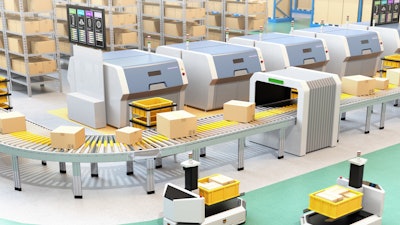
The global warehouse management market size was valued at $3.4 billion in 2022, and is expected to expand at a compound annual growth rate (CAGR) of 19 percent from 2023 to 2030. Growing economies across the globe have propelled various sectors — including healthcare, third- and fourth-party logistics (3PL/4PL), and retail — to achieve highly efficient operations so they could increase output and meet consumer demand.
Now, looking ahead to 2024, here are the most important trends coming in warehouse management:
- More and better warehouses. The e-commerce boom that escalated with the COVID-19 pandemic has heralded an unparalleled demand for sophisticated warehousing and distribution centers. Customer expectations when shopping online have evolved. Consumers expect more product choices and faster delivery. So more strategically-located state-of-the-art warehouses are needed to meet these expectations, which will keep fueling warehouse construction.
- Automation addressing labor shortage. The global labor shortage has become a post-pandemic issue that is affecting the output of most industries. The addition of a warehouse management system (WMS) can boost worker productivity by standardizing workflows, integrating with automation (robots, sorters, automated storage & retrieval systems (AS/RS), goods-to-person, etc.). A WMS can reduce labor and overall operating costs while increasing productivity. However, there's a misconception that the 'machines' will take over and remove the human element. Instead, we will need people with the skills to make sense of all the data being collected to continue to optimize new processes.
- Artificial intelligence (AI) and machine learning. Warehouses across all industries will increase their adoption of artificial intelligence (AI) and machine learning (ML) solutions. The emerging use cases of AI and ML are a rapidly growing and have the potential to revolutionize warehouse operations. AI and ML algorithms provide the actionable analytical data to optimize operations, increase efficiency, reduce costs, and improve customer satisfaction. AI can help companies make more informed decisions about their inventory, ensuring they have the right products in the right place at the right time. For example, AI can analyze data from various sources, including sales data, customer demand, and supply chain data to predict future demand and make recommendations on inventory levels at each warehouse.
- Immersive tech. Overnight or next-day delivery of products to the right destination is not just a factor of warehouse management workflows and automation but also one of the key skills of the warehouse staff. To maintain employees’ efficiency at the highest levels, warehouses will step up integrating immersive technologies. Virtual reality enhances employee skills with immersive training in warehouse tasks. Augmented reality aids the process of searching for a product, showing the optimal route to the item. Immersive reality technologies improve decision-making processes through operations visualization.
- Internet of Things (IoT). The Internet of Things (IoT) is revolutionizing how businesses manage their warehouses. IoT is a network of physical devices interconnected to the Internet, enabling them to capture and transmit data. IoT devices give warehouses an unprecedented level of real-time data analysis. The benefits are massive. Not only does it provide a precise method of inventory management, it also increases safety and security, decreases costs and waste, allows for predictive equipment maintenance, and makes data easily accessible for analytics purposes. IoT devices deployed in warehouses include radio frequency (RF) scanners, drones, radio frequency identification (RFID) tags, robots, and autonomous forklifts.
- Cloud computing. Cloud computing will make a mark in the coming months. A cloud-based WMS is warehouse management software implemented in a SaaS model. With a 100 percent web-based interface, systems can be accessed from any device via an internet connection. This contracting mode is swiftly overtaking the on-premises model, whereby the system is installed on a server hosted by and contained within the company itself. Some of the benefits of a cloud WMS deployment include: lower initial cost, faster deployment, increased security, highly scalable, always on current version so no upgrades, and accessibility from anywhere.
These Innovations — like AI/ML, cloud, and automation — make it an exciting time to work in warehouse management. The companies that find a way to employ these innovations and match them to their business strategy will have a competitive advantage in 2024 and the years ahead.






















